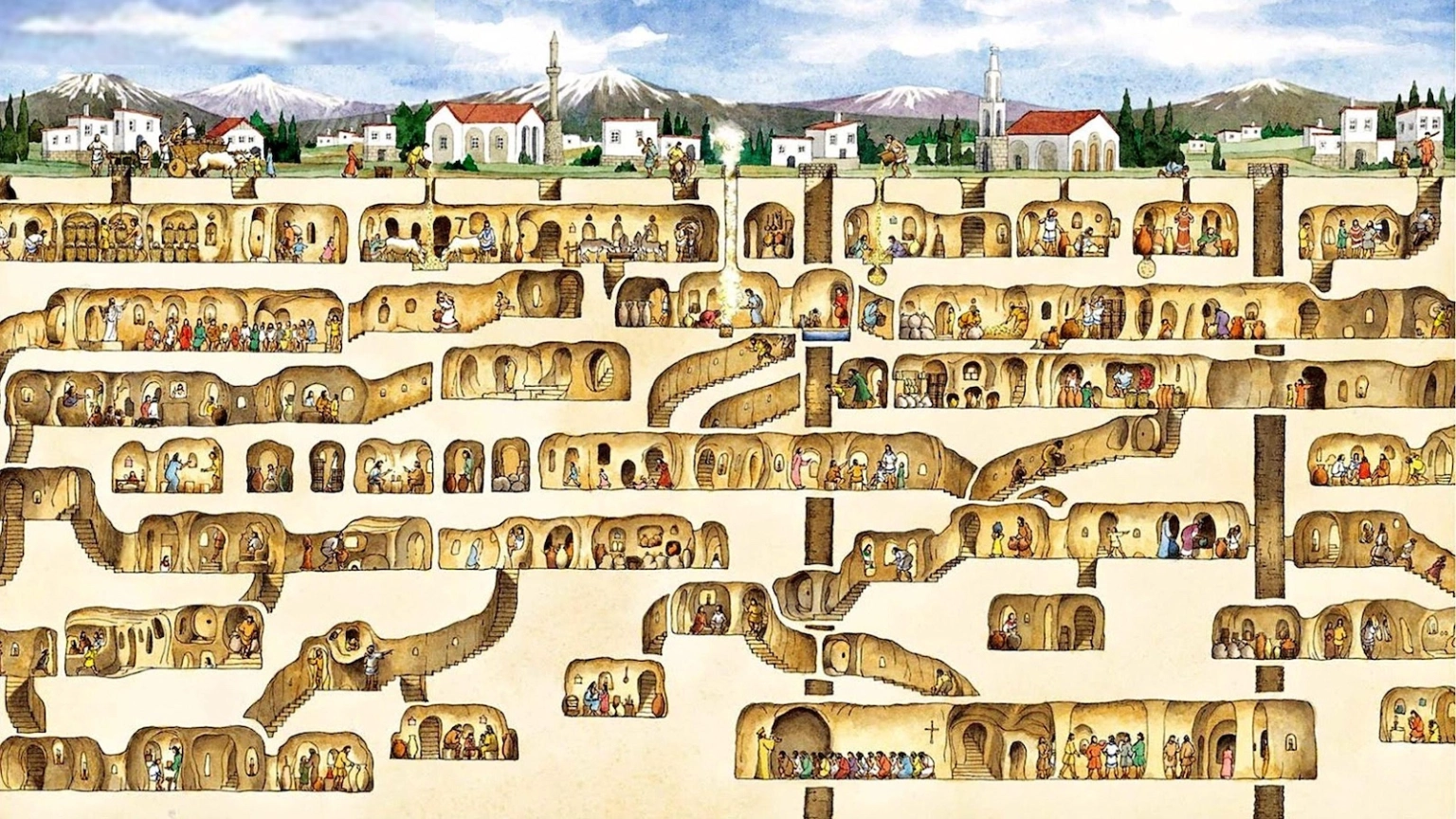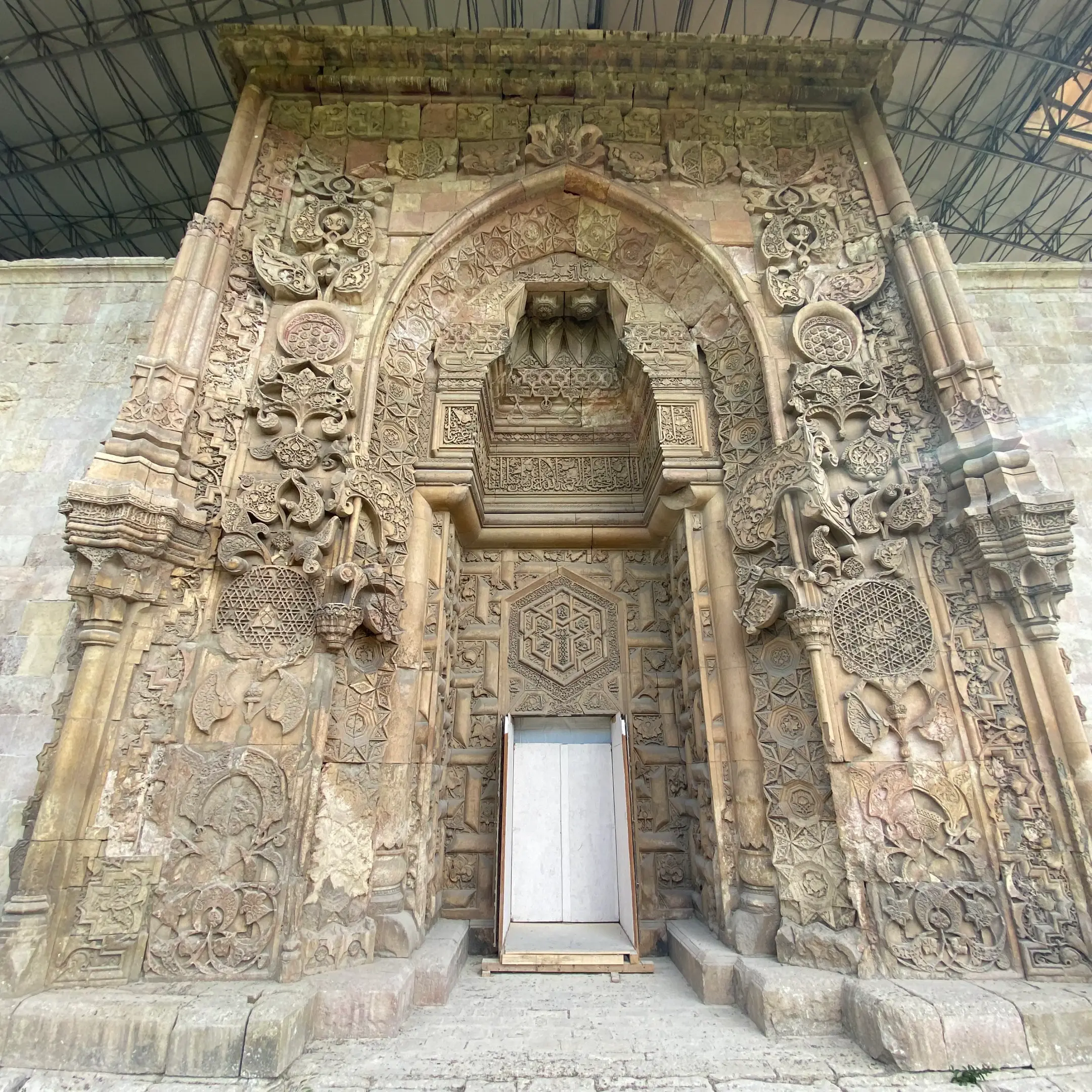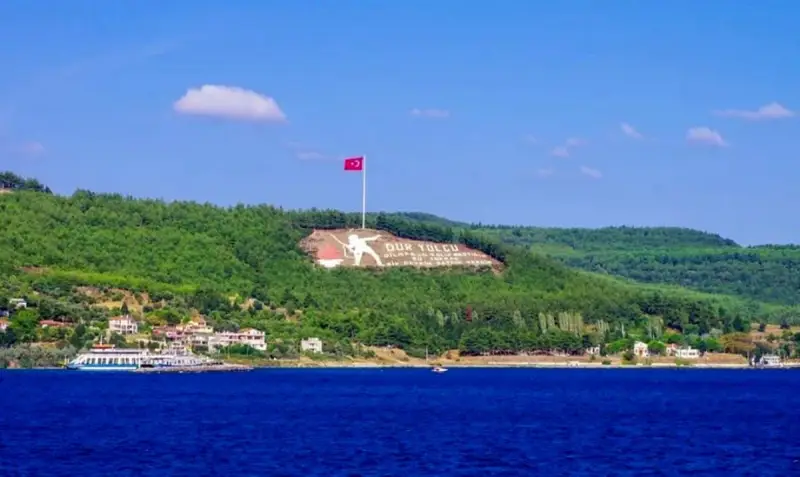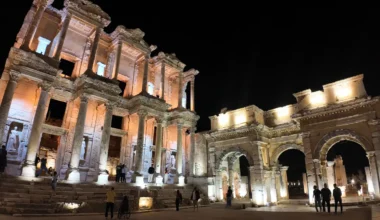Where is Topkapi Palace?
Topkapi Palace, a grandiose relic of the Ottoman Empire’s might and sophistication, stands proudly in Istanbul Turkey. Serving as the primary residence of the Ottoman Sultans for approximately four centuries, the palace is not just a monumental structure but a testimony to a rich historical era. The palace has transitioned from being the hub of sultanate power and grandeur to a museum that attracts millions, offering a glimpse into the luxurious life of the sultans and their court. Do you wonder when ramadan 2025 is? and when is Eid al-Fitr 2024?
History of Topkapi Palace

Topkapi Palace, an iconic symbol of Istanbul, embodies the zenith of the Ottoman Empire’s power and cultural achievements. Constructed upon the orders of Sultan Mehmed II following the conquest of Constantinople in 1453, the palace was strategically positioned to overlook both the Bosphorus and the Golden Horn, symbolizing the empire’s dominion over land and sea.
Topkapi Palace evolved over the centuries with each sultan contributing to its expansion and splendor. This led to the creation of a complex architectural masterpiece, a blend of various styles reflecting the diverse influences that the Ottoman Empire absorbed over the years. The palace’s layout, consisting of four main courtyards and several smaller buildings, was meticulously designed to accommodate the imperial household, administrative offices, and ceremonial spaces.
The palace wasn’t merely a residence but the epicenter of the empire’s political, cultural, and social life. It housed the Imperial Council, where significant decisions shaping the fate of vast territories were made. The palace also served as a center of education and artistic patronage, attracting scholars, artists, and craftsmen from across the empire, turning it into a melting pot of cultural and intellectual activity.
However, with the empire’s gradual decline, the significance of Topkapi Palace began to wane. The 19th century saw the sultans moving to more modern palaces that aligned with the changing times, leading to Topkapi losing its status as the primary seat of power and grandeur. The palace’s transformation into a museum in the early 20th century, following the establishment of the Republic of Turkey, marked a new chapter in its history. This transition opened the doors of this once secretive and private space to the public, allowing the world to witness the rich heritage and the intricate lifestyles of the sultans who once ruled from within its walls.
The Historical Significance of Topkapi Palace
- Center of Ottoman Power: Explore how Topkapi Palace was not just a residence but the administrative and educational center of the empire. Elaborate on how decisions made within its walls shaped the course of history in the region.
- Cultural Melting Pot: Discuss how the palace served as a melting pot of cultures, with influences from the Middle East, Europe, and Asia, reflecting the vastness of the Ottoman Empire.
- Transition to a Museum: Chronicle the transformation of the palace from the private domain of sultans into a public museum post the Ottoman Empire’s dissolution, and how this shift has contributed to historical preservation and education.
Architectural Marvels of the Palace
- Innovative Design: Describe the unique layout and design of the palace, highlighting the influence of Islamic and Byzantine architectural styles. Discuss how the palace’s aesthetic was ahead of its time and set a precedent for royal residences.
- Luxurious Decor: Detail the interior’s opulent decoration, from intricate tile work and lavish courtyards to the ornate chambers of the sultans.
- Engineering Mastery: Delve into the technological advancements of the era that are evident in the palace’s construction, such as complex water systems and structural innovations.
Topkapi Palace in Modern Culture
- Inspiration for Art and Literature: Discuss how Topkapi Palace continues to inspire modern artists, writers, and filmmakers, serving as a backdrop for numerous works that seek to capture its former splendor.
- Symbol of Istanbul: Explain how the palace, now a prominent museum, plays a crucial role in Istanbul’s identity, drawing tourists from around the globe and serving as a symbol of the city’s rich history.
- Conservation Efforts: Highlight the ongoing efforts to preserve and restore the palace, ensuring that its architectural grandeur and historical significance continue to be appreciated by future generations.
Exploring the Opulent Courts of Topkapi Palace

Topkapi Palace, with its opulent courts, is a labyrinth of luxury and power, each courtyard unfolding a different layer of the Ottoman Empire’s heart and soul. The transition from one courtyard to another is not merely a physical journey but a journey through the varying aspects of imperial life, from the public to the deeply private.
The First Courtyard: The Imperial Gate
- Entrance to Majesty: The journey into Topkapi Palace begins at the Imperial Gate, also known as the Bab-i Humayun. This grand entrance, adorned with calligraphy and symbolism, sets the tone for the splendor that lies ahead.
- Symbol of Power: Discuss the architectural features of the gate and its significance as a symbol of the sultan’s absolute power and divine right to rule.
- The Public Square: Once inside the first courtyard, visitors find themselves in a vast, open space, historically used for ceremonies and as a gathering place for the palace guards. This area, accessible to the general public during the Ottoman era, served as a space where the empire’s power and opulence were on public display.
The Second Courtyard: The Administrative Heart
- Hub of Empire’s Affairs: Moving deeper into the palace, the second courtyard functions as the administrative epicenter. Here resided the palace kitchens, council chambers, and the imperial stables, illustrating the empire’s organization and might.
- Seat of Government: Central to this courtyard is the Imperial Council Hall, where the Divan (Council) met to discuss state affairs. The proximity of this space to the sultan’s private quarters underscores the integration of administrative and personal domains.
- Architectural Marvels: The courtyard is also home to several architectural marvels, including the Tower of Justice, symbolizing the sultan’s role as the ultimate arbiter of justice.
The Third Courtyard: The Private Domain
- Sanctum of the Sultan: The third courtyard marks the entrance to the sultan’s private domain, a space reserved for the imperial family and the most trusted officials. It was a world away from the administrative bustle, dedicated to private life and contemplation.
- Educational and Spiritual Center: This courtyard houses the palace school, the library, and the sacred relics of the Prophet Muhammad, emphasizing the spiritual and intellectual life of the palace.
- Private Chambers and Audience Hall: The courtyard’s layout reflects a careful balance between public duties and private life. The Audience Chamber, where the sultan received ambassadors and viziers, sits alongside the private apartments and chambers, illustrating the seamless blend of personal and public spheres.
The Harem: A Glimpse into the Sultan’s Private Life

The Harem of Topkapi Palace, often shrouded in mystery and intrigue, was far more than a mere dwelling for the Sultan’s consorts and concubines. It was a complex social institution, an integral part of the imperial household, and a center of power dynamics within the palace.
The Structure and Layout of the Harem
- Architectural Complexity: The Harem was a labyrinthine complex of over 400 rooms, courtyards, and halls, each meticulously designed to serve the functional and hierarchical needs of its inhabitants. Describe the intricate layout, emphasizing the privacy and seclusion integral to its design.
- Security and Seclusion: Detail the rigorous security measures, including guarded gates and the watchful eye of the eunuchs, ensuring the complete isolation of the Harem from the outside world.
- Residential Dynamics: Discuss how the living quarters were allocated according to status and favor, with the Sultan’s mother (the Valide Sultan) and the Sultan’s favorites (the Kadins) occupying the most luxurious apartments.
The Role and Life of the Harem Inhabitants
- Hierarchy and Order: Elaborate on the strict social hierarchy within the Harem, with the Valide Sultan at the top, followed by the Kadins, the İkbals (favorites), and the Gediklis (the regulars).
- Education and Training: Discuss the rigorous education and training the inhabitants received, including lessons in arts, culture, etiquette, and administration, preparing them not just to serve the Sultan but also to play significant roles in palace politics and governance.
- Social and Political Influence: Highlight the influential roles played by the Harem inhabitants, particularly the Valide Sultan and the favored consorts, in matters of state and succession, often acting as key advisors to the Sultan.
Intrigues and Stories from the Harem

- Power Struggles: Narrate the intense power struggles and intrigues that characterized life within the Harem, with inhabitants vying for the Sultan’s favor and a higher position within the complex social hierarchy.
- Historical Anecdotes: Share intriguing anecdotes and stories that have emerged from the Harem over the centuries, shedding light on the personal lives, ambitions, and strategies of its inhabitants.
- Cultural Impact: Reflect on how the mysteries and narratives of the Harem have captivated historians, writers, and artists alike, inspiring a plethora of cultural works and contributing to the enigmatic allure of Topkapi Palace.
Topkapi’s Treasures: Collections and Exhibits
Topkapi Palace, beyond its architectural splendor and historical significance, houses some of the world’s most extraordinary collections and exhibits. Each collection, whether it be the Imperial Treasury, the Armoury, or the Sacred Relics, narrates a different facet of the Ottoman Empire’s might, spirituality, and grandeur.
The Imperial Treasury: A Trove of Precious Artifacts
- Richness and Variety: Describe the breathtaking assortment of items in the Imperial Treasury, including jewels, thrones, crowns, and other precious objects that exemplify the wealth and opulence of the Ottoman Empire.
- Notable Artifacts: Highlight some of the most renowned items, such as the Topkapi Dagger and the Spoonmaker’s Diamond, delving into their history, craftsmanship, and the tales that surround them.
- Symbolism and Significance: Discuss the significance of these treasures beyond their material value, symbolizing the empire’s power, its connections with other kingdoms, and its place in world history.
The Armoury Collection: Warfare and Weaponry
- Showcase of Might: Explore the extensive collection of arms and armor in the palace, showcasing the military prowess and technological advancements of the Ottoman Empire. Describe the variety of weapons, from swords and bows to rifles and armor.
- Artistic Merit: Highlight the artistic aspects of the collection, where weaponry also served as an art form, adorned with intricate designs, calligraphy, and precious stones.
- Historical Context: Provide insights into how these weapons were used in the empire’s conquests and defenses, reflecting the strategic and martial skills that were central to the empire’s expansion and longevity.
The Sacred Relics: Spiritual Significance and Artifacts
- Spiritual Heart of the Empire: Introduce the Chamber of Sacred Relics, which houses an invaluable collection of items significant to the Islamic world, including relics attributed to Prophet Muhammad, his companions, and other prophets.
- Notable Relics: Detail the most revered relics, such as the mantle, sword, and footprint of Prophet Muhammad, discussing their spiritual importance and the role they played in legitimizing the sultan’s role as a Caliph.
- Cultural and Religious Influence: Discuss the impact of these relics on the empire’s religious life and their influence in establishing Istanbul as a central city in the Islamic world.
Visiting Topkapi Palace: Tips and Insights

Visiting Topkapi Palace, a treasure trove of history, culture, and art, is an experience like no other. To make the most of your visit to this iconic landmark, it’s important to plan carefully. Here are some tips and insights to help you navigate your journey through the palace and its surroundings.
Best Times to Visit Topkapi Palace and How to Avoid the Crowds
- Optimal Visiting Hours: Consider visiting early in the morning or later in the afternoon to avoid the peak crowds. The palace is usually less crowded during these times, allowing for a more leisurely and intimate exploration of its courtyards and exhibits.
- Seasonal Considerations: Spring (April to June) and fall (September to November) are ideal for visiting, offering pleasant weather and relatively fewer tourists compared to the summer months.
- Ticketing Tips: Purchase tickets online in advance to skip the long ticket lines. Also, consider investing in a museum pass if you plan to visit other museums and historical sites in Istanbul, which can also help in bypassing long queues.
Navigating Through the Palace: Routes and Tours
- Plan Your Route: Familiarize yourself with the palace’s layout. Decide in advance which sections are a must-visit for you, as covering the entire palace in a single visit can be overwhelming.
- Guided Tours: Consider taking a guided tour. Knowledgeable guides can provide in-depth information about the palace’s history, architecture, and the stories behind its treasures, enriching your experience.
- Self-Guided Exploration: If you prefer a self-guided tour, be sure to pick up a map or download an app with detailed information about the palace’s sections and exhibits.
Nearby Attractions and Combining Your Visit
- Hagia Sophia and Sultanahmet Square (hippodrome of Istanbul) : Situated close to Topkapi Palace, these landmarks are part of Istanbul’s historic fabric. A combined visit can offer a more comprehensive understanding of the city’s rich history.
- Basilica Cistern: Another marvel, just a short walk from the palace, is worth exploring for its architectural grandeur and historical significance.
- Relax in Gulhane Park: After your palace visit, consider unwinding in the nearby Gulhane Park, a historical urban park that offers a serene environment and beautiful views, perfect for reflecting on your experience or enjoying a leisurely stroll.
How to get to Topkapi Palace?
Getting to Topkapi Palace is relatively straightforward, given its central location in Istanbul and the city’s well-developed public transportation system. Here are the primary ways to reach Topkapi Palace:
- By Tram
- Tram Line: The most convenient and commonly used method to get to Topkapi Palace is by tram. Use the T1 tram line.
- Stations: Get off at the Sultanahmet tram stop. From there, Topkapi Palace is just a short walk away. The route is well-signposted, and you’ll find the palace located adjacent to other major attractions like Hagia Sophia and the Blue Mosque.
2. By Metro
- Metro Lines: If you are coming from other parts of the city, consider taking the metro. The closest metro station to Topkapi Palace is Marmaray Sirkeci Station.
- Connection: After getting off at the metro station, you can walk or take the tram for one stop to reach the Sultanahmet area where the palace is located.
3. By Bus
- Bus Routes: Multiple bus routes service the Sultanahmet area. Check the Istanbul public transportation website or a local transit app for the best route from your location.
- Drop-off Point: Get off at the Sultanahmet bus stop. The palace is within walking distance from there.
3. By Taxi or Ride-Sharing Services
- Convenience: For convenience, you may consider taking a taxi or a ride-sharing service like Uber or BiTaksi, especially if you’re not close to a tram or metro line.
- Address: Just mention “Topkapi Sarayi” (Topkapi Palace in Turkish) to the driver. Most drivers will know the popular tourist destinations well. Here is the google maps link of Topkapi palace.
4. On Foot
- Scenic Walk: If you’re staying in the Sultanahmet district or nearby areas, walking could be a pleasant option. The area is scenic and rich with historical sites.
Tips for the Journey
- Purchase an Istanbulkart: If you plan on using public transportation multiple times, consider buying an Istanbulkart, an electronic boarding pass that can be used on buses, trams, and metros.
- Check the Opening Hours: Before you set off, make sure to check the opening hours of Topkapi Palace, as they can vary depending on the season and local holidays.
- Wear Comfortable Shoes: If you plan to walk or use public transport, wear comfortable shoes as you will likely do a lot of walking.






